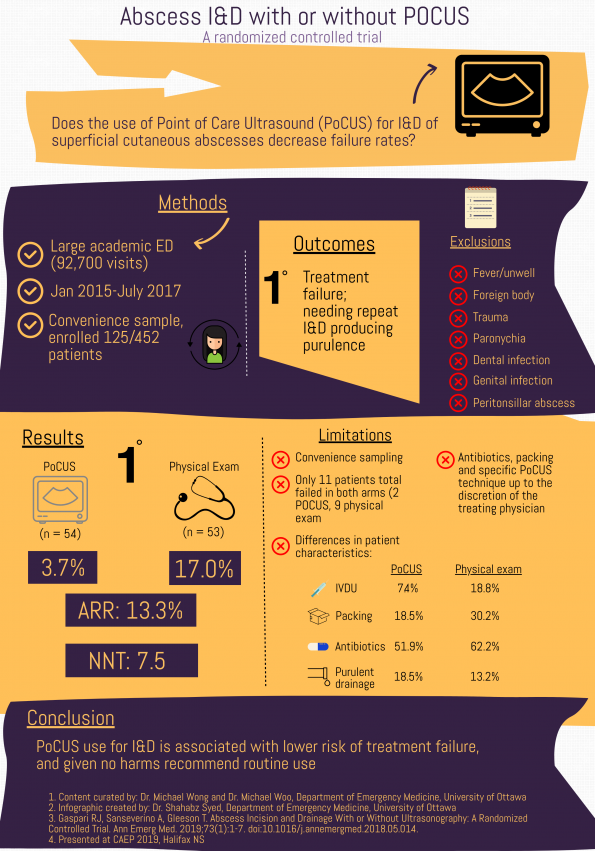Journal Club Summary
Methodology Score: 2.5/5
Usefulness Score: 2/5
Gaspari RJ, et al. Ann Emerg Med. 2019 Jan;73(1):1-7
Question and Methods: Unblinded single-centre RCT comparing POCUS vs. physical exam guided I&D of abscesses in systemically well patients, comparing treatment failure at 10d defined by repeat I&D producing purulence.
Findings: In 107 patients who achieved follow-up, the POCUS group had a lower treatment failure rate (3.7% vs 17.0%), a difference of 13.3% (95%CI 0-19.4%).
Limitations: This paper was limited by its numbers, and significant differences among the groups in clinically significant predictors of success that favour a positive trial.
Interpretation: Given the lack of harm and the potential for greater treatment success, we should move towards routine POCUS evaluation of abscesses as standard practice.
By: Dr. Michael Wong
Epi lesson
Intention-to-treat (M-ITT) Analyses
Intention-to-treat (ITT) analyses are widely recommended as the preferred approach to the analysis of most clinical trials. The basic intention-to-treat principle is that participants in trials should be analyzed in the groups to which they were randomized, regardless of whether they received or adhered to the allocated intervention, crossed over to other treatments, or were withdrawn from the study. Post-randomization exclusions may be acceptable when patients are inappropriately randomized into a clinical trial or when pre-randomization information on patients’ eligibility status is not available at the time of randomization. Such an approach is known as “modified intention-to-treat” analysis and must be pre-specified in the protocol. M-ITT is most likely to be seen in RCTs of critical situations, e.g. cardiac arrest.



